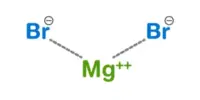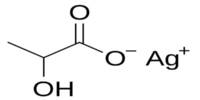The hinge of a bivalve refers to the specialized anatomical structure that allows the two halves, or valves, of the shell to open and close. Bivalves are a type of mollusk that includes clams, mussels, oysters, and scallops, among others.
Recently, flexible and foldable devices have developed at a dramatic rate. Foldable technology is becoming more prevalent in people’s life. The folded sections must resist continuous deformation during long-term use, which could wear down the gadgets. As a result, the damage will interfere with the devices’ ability to operate normally.
Inspired by the hinge of bivalve Cristaria plicata, which experiences hundreds of thousands of repeating opening-and-closing valve motions throughout the bivalve’s lifetime, a research team led by Prof. Yu Shuhong collaborating with Prof. Wu Hengan from the University of Science and Technology of China (USTC) proposed their tactics to improve the fatigue resistance of structural materials.
The work titled “Deformable hard tissue with high fatigue resistance in the hinge of bivalve Cristaria plicata” was published in Science on 23rd June 2023.
By utilizing the inherent qualities of each component through the multiscale structure, the researchers proposed a novel design strategy of fatigue-resistant structural materials and clarified the mechanism of fatigue resistance of deformable biomineral tissue in the hinge of the bivalve C. plicata, a species of mollusk.
They discovered that the folding fan-shaped region (FFR) in the hinge can withstand significant deformation during frequent opening and closing valve operations and continue to function normally for a considerable amount of time. The tissue still functions well and shows no signs of fatigue behaviors even after 1,500,000 cycles.
The folding fan-shaped area and the outer ligament (OL) make up the two regions that make up the hinge. The researchers identified the functions of each hinge region during the motion of the valves using observation and finite element analysis.
The hinge of a bivalve shell is typically located along the dorsal side (top) and is formed by the articulation of the two valves. It is usually composed of a combination of teeth and sockets that interlock when the valves are closed. The specific structure of the hinge can vary between different bivalve species, but the overall function remains the same.
While the FFR is deformed circumferentially and offers strong radial support to fix the OL under the limited radial deformation, the stretched OL takes on the circumferential stress and stores the majority of the elastic strain energy upon closing.
They demonstrated that the FFR is endowed with considerable deformability and load translation capabilities by the hierarchical structures that extend from the macroscale level down to the lattice level.
This work offers a novel biomimetic paradigm for creating artificial materials with fragile components and offers a fresh viewpoint on how to increase the durability of materials. Future fatigue-resistant material development is clarified by the multi-level design approach.
















